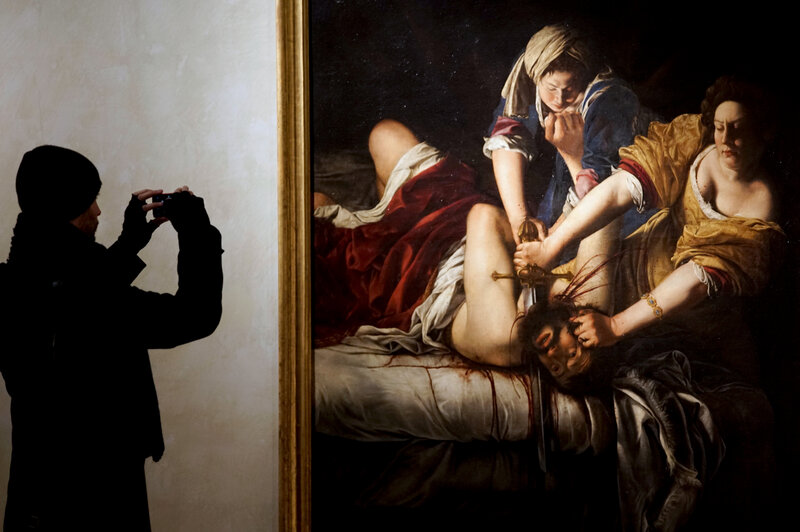Italian 17th century painter Artemisia Gentileschi, whose work explores themes of female freedom, power and defiance, is the subject of a major retrospective at Rome’s Palazzo Braschi. Though she was one of the few female late-Renaissance painters, Gentileschi remains under-known. Sylvia Poggioli explains below that this is likely due to the fact that Gentileschi was raped and went through an extremely tortuous and public trial convicting her attacker, which has since greatly affected the interpretation of her work by (mostly male) authors of art history. Read Poggioli in partial below, in full via NPR.
Two years later, Artemisia was raped by the painter Agostino Tassi. Family honor had to be avenged, and the trial lasted seven months.
While she was testifying against her abuser, Artemisia’s fingers were subjected to sibille — metal rings that were increasingly tightened, a courtroom practice at the time to ensure the witness was telling the truth.
Every word of the court case was transcribed, and Artemisia’s testimony under torture was brutally graphic, as she described every detail of the sexual assault. Tassi was found guilty, but he never served his sentence.
“She is a phenomenon in terms of the history of art, because we really understood her life far earlier than we cared, really, about her painting,” she says. “And the understanding of Artemisia as a painter, as an artist, followed the fanfare of her celebrated rape, and it made a rather skewed understanding of this artist. And now we try to go back and fill in and properly understand.”
For a long time, Artemisia Gentileschi’s paintings have been interpreted almost exclusively as symbolic revenge against the man who raped her.
Scholars cited her various depictions of one of her favorite topics of the time, of freedom and defiance — the biblical figure Judith, who took it upon herself to seduce the besieging general Holofernes and decapitate him in his bed.
*Image: A visitor takes a photo of Judith Slaying Holofernes by Italian 17th century artist Artemisia Gentileschi, on display at Rome’s Palazzo Braschi museum. The “Artemisia Gentileschi and Her Times” exhibition will run till May 7, 2017. Andrew Medichini/AP
